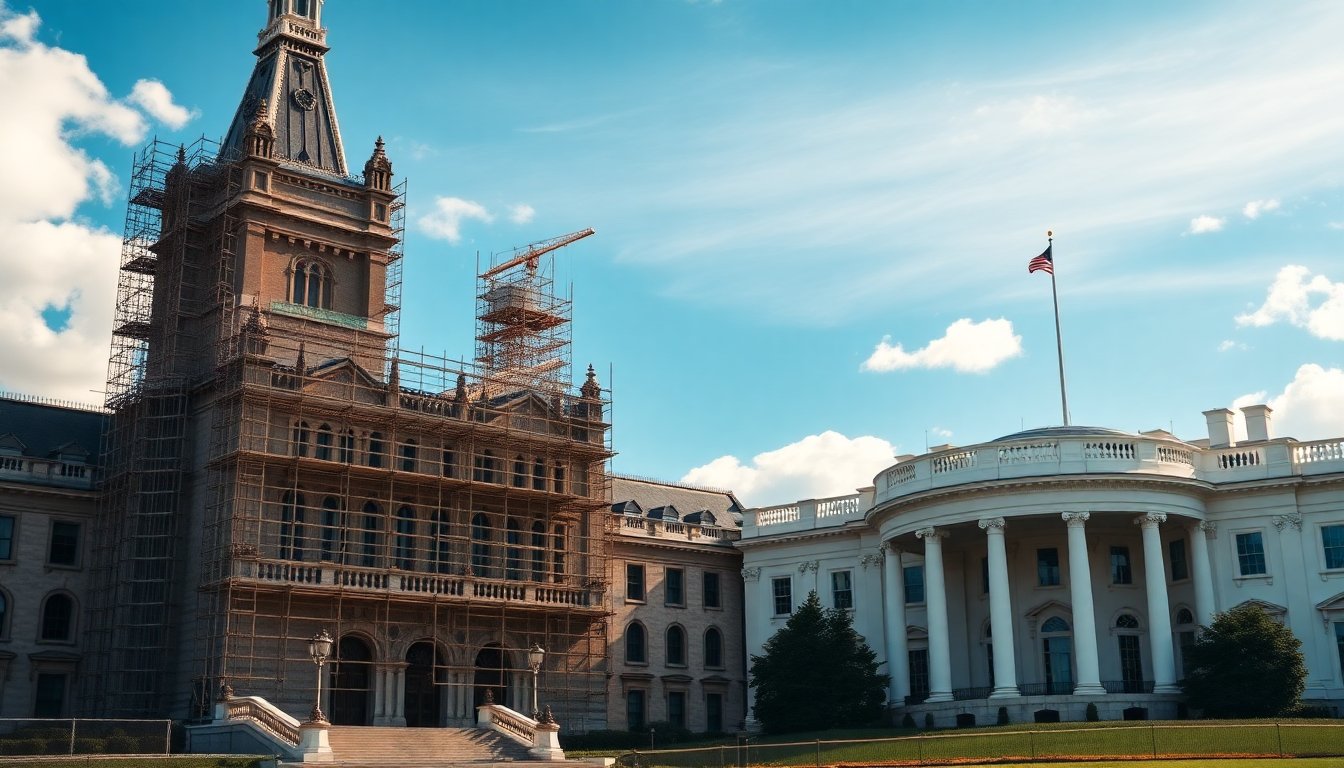Table of Contents
The pace of renovations in political architecture often mirrors the priorities and styles of governing bodies. A prime example is the refurbishment of Canada’s Parliament, projected to take nearly three decades. This timeline stands in stark contrast to the swift renovations conducted during Donald Trump’s presidency at the U.S. White House, which were completed in record time.
Understanding the timelines of renovations
The ambitious overhaul of Canada’s Parliament is a detailed process, focused on modernizing the historic structure while maintaining its architectural heritage. This extensive project involves not just aesthetic improvements, but also essential upgrades to infrastructure and security systems. Canadian officials expect the entire renovation to span over 30 years, underscoring a long-term commitment to preserving national heritage.
Renovation plans for Canadian Parliament
The renovation plan for the Canadian Parliament is extensive and addresses various structural and functional elements. Key upgrades will include improvements to heating and cooling systems, increased accessibility for individuals with disabilities, and compliance with modern safety standards. Each phase of the project is strategically planned to minimize disruptions, ensuring that Parliament can continue to operate effectively as the nation’s governing body.
White House renovations under Trump
The renovations at the White House during the Trump administration were notable for their speed. These changes often prioritized quick cosmetic upgrades over significant structural modifications. Trump’s approach emphasized urgency, exemplified by the rapid demolition of the East Wing. This move aimed to establish a modern aesthetic aligned with his administration’s vision.
The impact of speed on perception
The rapid pace of renovations at the White House raises important questions about leadership and effectiveness. While some view it as a sign of decisiveness and a focus on achieving immediate results, others see potential pitfalls. Quick changes can sometimes lack the depth and careful planning evident in long-term projects, such as the renovations of Canada’s Parliament. Critics caution that without a comprehensive vision, these speedy fixes may compromise historical integrity and functionality in the long run.
Comparative analysis of renovation philosophies
The differing approaches to renovations reflect broader governmental philosophies. Canada’s decision to undertake extensive renovations demonstrates a commitment to sustainability and preservation. In contrast, the U.S. administration’s quick renovations indicate a focus on immediate impact and visual change. This contrast raises significant questions about the value placed on historical preservation compared to modern adaptation.
The different timelines of two major government renovations illustrate the distinct priorities and leadership philosophies in Canada and the United States. Canada’s Parliament is undergoing a gradual and thorough transformation, while the U.S. White House has chosen a more immediate, though less comprehensive, renovation approach. This contrast presents a compelling case study of how architecture intersects with politics and national identity.


